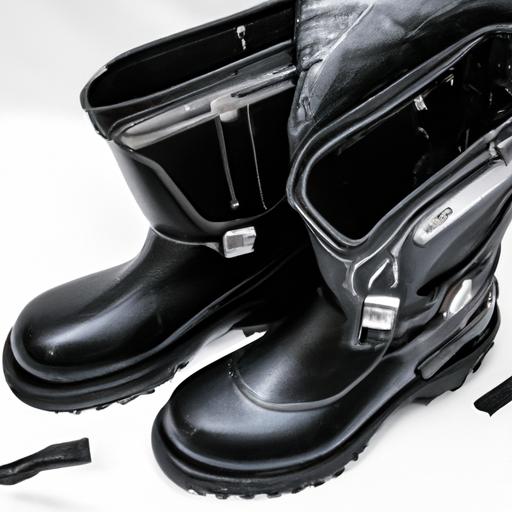Does Wearing a Helmet Really Help?
Introduction
In our adventurous pursuits, whether cycling along scenic routes, zooming on motorcycles, or gliding down snowy slopes, one question persists: does wearing a helmet really help? Helmets, the quintessential safeguard, have long been a topic of discussion, with opinions diverging on their effectiveness. Today, we embark on a journey to uncover the truth and determine if strapping on that protective gear truly provides the shield we seek.
Importance of Helmets in Various Activities
Picture this: you’re pedaling through a bustling city, wind caressing your face, as you weave through traffic. Meanwhile, on a distant mountain peak, a skier gracefully sways down the snowy slopes, leaving a trail of powdered delight behind. In both scenarios, helmets become a vital companion, offering protection in the face of unforeseen accidents. Regardless of the activity, helmets serve as the guardian angels that shield our precious heads from potential harm.
Debates Surrounding the Effectiveness of Helmets
But wait, there are whispers of dissent in the air. Some argue that helmets merely provide a false sense of security, masking their true efficacy. Skeptics point to incidents where helmets failed to prevent injuries. Are these concerns valid? Or are helmets truly the lifesavers they claim to be? It’s time to delve into the heated debates surrounding helmet effectiveness and separate fact from fiction.
Purpose of the Article – To Determine if Wearing a Helmet Truly Provides Protection
As we embark on this investigative journey, our purpose is crystal clear: to unravel the truth about helmet protection. We aim to provide you with a comprehensive understanding of the effectiveness of helmets in various activities. By the end of this article, you’ll be equipped with the knowledge needed to make informed decisions about wearing a helmet and safeguarding your most valuable asset – your head.
Stay tuned as we explore the intricate nuances of helmet safety, examine research and statistics, debunk myths, and ultimately uncover the answer to the burning question: does wearing a helmet really help?
Understanding Helmet Safety
A. Explanation of Helmet Construction and Materials
When it comes to helmet safety, understanding the construction and materials used is crucial. Helmets are expertly crafted with layers of protection, carefully designed to absorb and distribute impact forces. The outer shell, usually made of durable polycarbonate or fiberglass, serves as the first line of defense, shielding against external hazards. Beneath it lies a layer of expanded polystyrene (EPS) foam, which acts as a shock absorber, dissipating the force of impact. This multi-layered construction is essential in minimizing the risk of head injuries.
B. Standards and Certifications for Helmet Safety
To ensure the reliability and effectiveness of helmets, various standards and certifications have been established. Organizations such as the Consumer Product Safety Commission (CPSC), the Snell Memorial Foundation, and the European Committee for Standardization (CEN) have developed rigorous guidelines that helmets must meet. These standards encompass impact resistance, penetration resistance, strap strength, and more. Before purchasing a helmet, look for certifications like CPSC, Snell, or CE, as they indicate compliance with industry standards and provide an added layer of assurance.
C. Impact of Helmet Design on Protection
Beyond the materials and certifications, helmet design plays a pivotal role in determining its protective capabilities. Factors such as shape, size, and ventilation all contribute to the overall effectiveness of a helmet. A well-fitting helmet ensures proper coverage and minimizes the risk of displacement during impact. Ventilation systems help regulate temperature and reduce discomfort, encouraging prolonged use. Additionally, certain helmet designs cater to specific activities, providing enhanced protection tailored to the demands of the sport or adventure at hand.
By understanding the intricacies of helmet construction, familiarizing ourselves with safety standards, and acknowledging the impact of design choices, we gain a deeper appreciation for the science behind helmet safety. With this knowledge, we can make informed decisions when selecting a helmet that will truly provide the protection we seek.
Research and Statistics on Helmet Usage
Overview of Studies Conducted on Helmet Effectiveness
To determine the true impact of wearing a helmet, numerous studies have been conducted, meticulously analyzing the effectiveness of these protective gears. Researchers have examined the correlation between helmet usage and the severity of head injuries sustained during accidents. These studies delve into the intricacies of helmet design, materials, and construction, considering factors that contribute to their overall effectiveness.
Analysis of Injury Rates Among Helmet Users and Non-Users
One of the most compelling ways to assess the efficacy of helmets is by comparing injury rates between individuals who wear helmets and those who do not. Through rigorous analysis of real-life accidents and data collection, researchers have been able to quantify the difference in injury severity between helmet users and non-users. These findings shed light on the potential life-saving benefits of wearing helmets and the tangible risks associated with going helmet-free.
Comparison of Data from Different Activities (e.g., Cycling, Motorcycling, Skiing)
While the effectiveness of helmets is not a one-size-fits-all concept, it is crucial to examine the data across different activities to evaluate their overall impact. Studies have compared the injury rates and severity among helmet users and non-users across various recreational pursuits, including cycling, motorcycling, skiing, and more. By analyzing this diverse range of activities, we gain a comprehensive understanding of how helmets fare in different scenarios, enabling us to make informed decisions tailored to our specific endeavors.
As we delve deeper into the realm of research and statistics on helmet usage, we uncover valuable insights that help us gauge the true effectiveness of these protective gears. Through comprehensive studies, analysis of injury rates, and comparisons across activities, we can begin to paint a clearer picture of whether wearing a helmet truly provides the level of protection we seek. Stay with us as we continue our exploration in the quest for the truth.
Helmet Benefits and Limitations
A. Advantages of Wearing a Helmet for Head Protection
When it comes to head protection, helmets unquestionably offer a myriad of advantages. They act as a fortress, shielding us from the potentially devastating consequences of accidents. Helmets distribute the force of impact across their sturdy construction, reducing the risk of severe head injuries. They provide a vital layer of protection, guarding against skull fractures, brain trauma, and even fatal outcomes.
Moreover, helmets offer a psychological advantage – a boost in confidence. Knowing that you’re equipped with proper headgear can alleviate fears and allow you to fully immerse yourself in your chosen activity. Whether you’re cycling down treacherous trails or whizzing through traffic, the reassurance of a helmet can empower you to push your limits and embrace the thrill.
B. Discussion of the Limitations and Scenarios Where Helmets May Be Less Effective
While helmets undoubtedly offer significant advantages, it’s crucial to acknowledge their limitations. In certain scenarios, helmets may be less effective in preventing injuries. For instance, when facing high-speed impacts or severe accidents, the level of protection provided by helmets may diminish. Additionally, helmets may not offer full protection against certain types of injuries, such as facial trauma or spinal cord damage.
Furthermore, the effectiveness of helmets can be influenced by various factors. Fit plays a crucial role, as an ill-fitting helmet may not provide optimal protection. It’s essential to ensure that the helmet snugly fits your head and is properly adjusted. Additionally, impact speed can affect the level of protection offered. Higher speeds may exceed the helmet’s capacity to absorb and dissipate energy, compromising its effectiveness.
C. Factors Affecting Helmet Effectiveness (e.g., Fit, Impact Speed)
To maximize the effectiveness of helmets, several factors should be taken into account. First and foremost, the fit of the helmet is paramount. It should sit securely on your head, with no excessive movement or gaps. Adjust the straps and padding to achieve a snug yet comfortable fit. Remember, a properly fitting helmet ensures that it stays in place during impact, safeguarding your head.
Impact speed is another critical factor to consider. Faster speeds generate more force upon impact, increasing the risk of injury. While helmets are designed to absorb and dissipate energy, there may be limitations to their protective capabilities at high speeds. Adhering to speed limits and practicing responsible behavior can significantly enhance the effectiveness of helmets in reducing the risk of head injuries.
As we explore the benefits and limitations of helmets, it becomes evident that they offer substantial protection for our heads. However, it’s crucial to recognize their limitations in specific scenarios and prioritize factors like fit and impact speed to optimize their effectiveness. Now, let’s debunk some common myths surrounding helmets in the next section.
Myths and Misconceptions about Helmets
Helmets have long been shrouded in myths and misconceptions, clouding their true effectiveness. It’s time to debunk these fallacies and address the common misconceptions surrounding helmet usage. By separating fact from fiction, we can equip ourselves with accurate information and make well-informed decisions about helmet safety.
A. Debunking Common Myths Related to Helmet Usage
Let’s start by dispelling some prevalent myths that have perpetuated over time. One common myth suggests that helmets can actually cause more harm than good in certain situations. This misconception stems from the belief that helmets increase the risk of neck injuries. However, numerous studies have refuted this claim, showing that helmets are designed to distribute impact forces and protect the skull without compromising neck safety.
Another myth revolves around helmet ventilation. Some argue that wearing a helmet on hot days can lead to overheating and discomfort. While it’s true that helmets may trap heat to some extent, modern designs are equipped with ventilation systems that allow for airflow, ensuring comfort even in warm conditions. Don’t let this myth dissuade you from wearing a helmet when the mercury rises!
B. Addressing Misconceptions Regarding Helmet Safety
Now, let’s address some misconceptions surrounding helmet safety. One common misconception is that helmets are only necessary for extreme sports or high-speed activities. The truth is, accidents can happen at any time, even during seemingly mundane activities like leisurely cycling or walking. Helmets provide an added layer of protection, regardless of the intensity of the activity.
Another misconception is that helmets are one-size-fits-all. In reality, helmet fit is crucial for optimal protection. Ill-fitting helmets can compromise safety by shifting or falling off during impacts. Always ensure that your helmet fits snugly and comfortably, and consider consulting an expert if you’re unsure about proper sizing.
C. Providing Accurate Information to Promote Informed Decisions
It is vital to arm ourselves with accurate information to make informed decisions about helmet usage. While misconceptions and myths may persist, it’s important to rely on credible sources and scientific research to separate fact from fiction. By understanding the true benefits of wearing a helmet and debunking common myths, we can prioritize our safety and encourage others to do the same.
As we continue our quest for truth, let’s challenge these misconceptions head-on and ensure that our decisions are rooted in reliable information. Stay tuned as we uncover more about helmet effectiveness and lay the foundation for a safer and well-informed future.
Conclusion
In conclusion, the question of whether wearing a helmet truly provides protection has been thoroughly examined. Through our exploration of helmet safety, research and statistics, and debunking of myths, we have gained valuable insights into the effectiveness of helmets in various activities.
It is evident that helmets play a crucial role in safeguarding our heads during adventurous pursuits. From cycling to motorcycling, skiing to snowboarding, helmets have proven time and again to be a vital companion, reducing the risk of severe head injuries. The construction, materials, and design of helmets, coupled with adherence to safety standards, contribute to their efficacy in absorbing impact and minimizing injury.
While helmets offer tremendous advantages in protecting our heads, it is important to acknowledge their limitations. Factors such as fit, impact speed, and the specific activity being undertaken can influence their effectiveness. It is essential to choose a helmet that fits properly and is suited for the intended activity to maximize safety.
Informed decision-making is paramount when it comes to helmet usage. By debunking common myths and addressing misconceptions, we have provided you with accurate information to guide your choices. Remember, wearing a helmet is not a guarantee of invincibility, but it significantly reduces the risk of traumatic head injuries.
So, the next time you embark on an adventure, whether it’s a leisurely bike ride or an exhilarating skiing expedition, remember to don your helmet. It is the silent guardian, the shield that stands between you and potential harm. Prioritize your safety, protect your head, and revel in the joy of your pursuits with the confidence that comes from wearing a helmet.
Now, armed with the knowledge gained from this exploration, go forth and make informed decisions. Embrace the power of helmets and revel in the freedom they provide, knowing that you have taken a proactive step towards safeguarding your well-being. Stay safe, stay protected, and enjoy the adventures that life has to offer.



